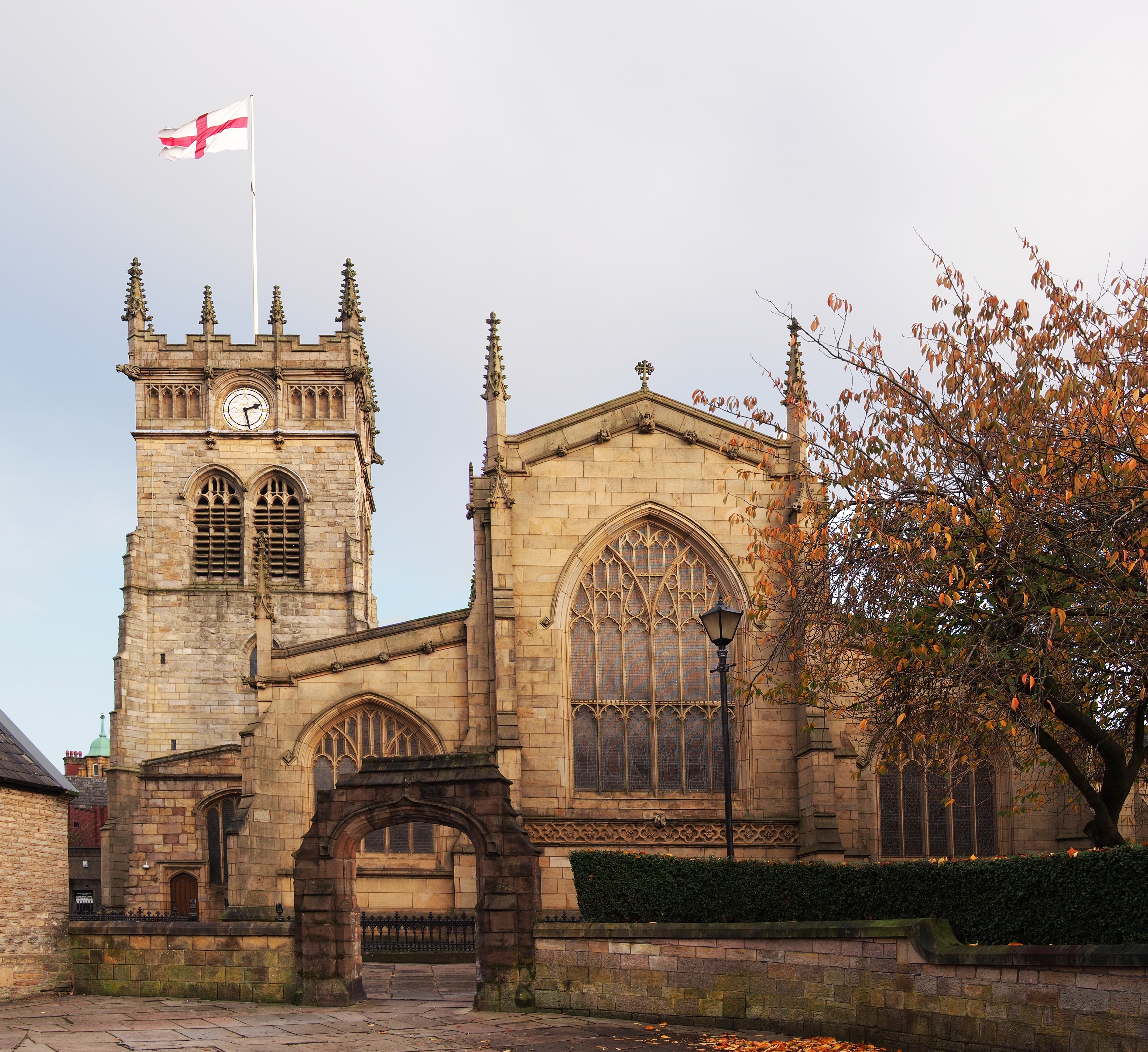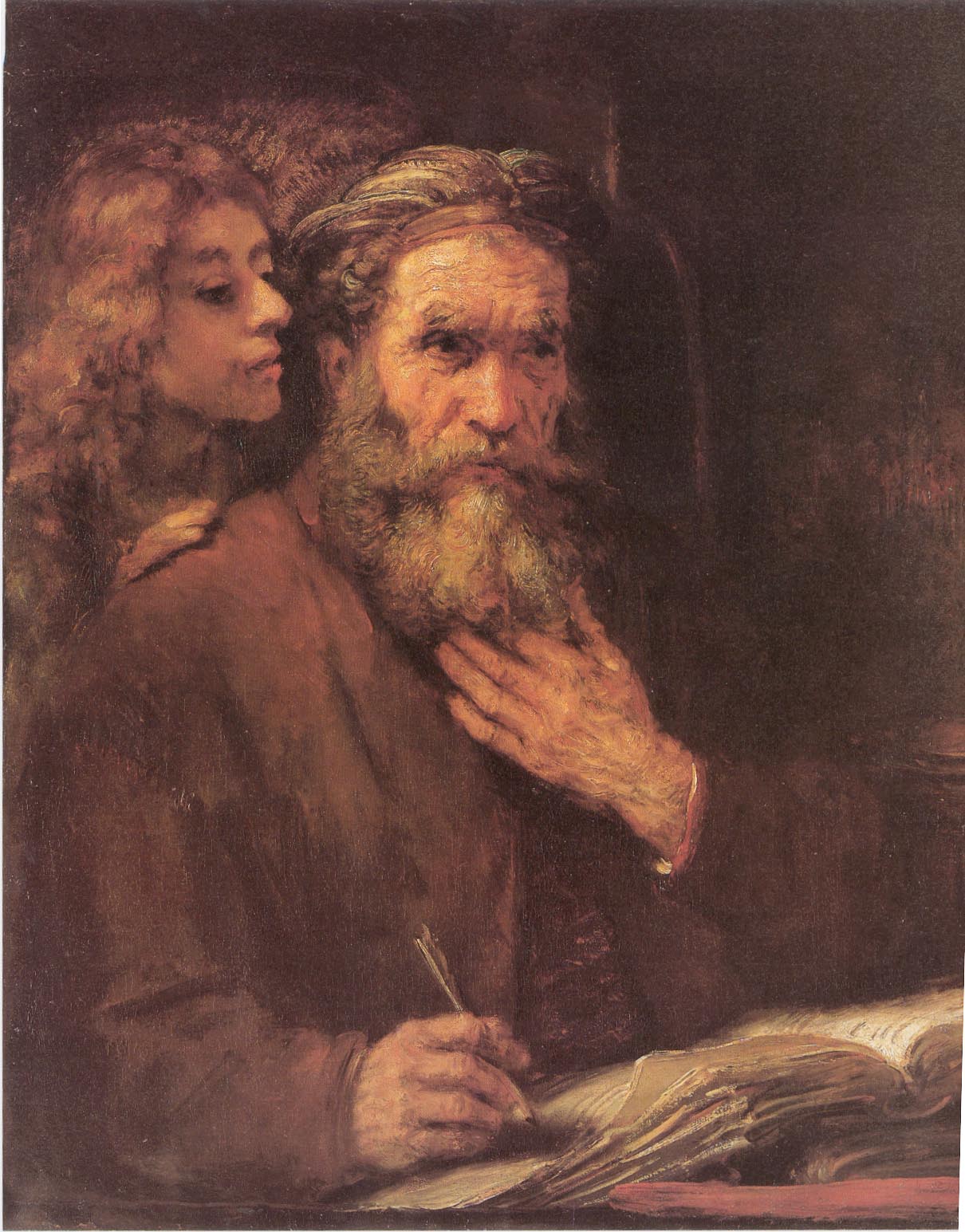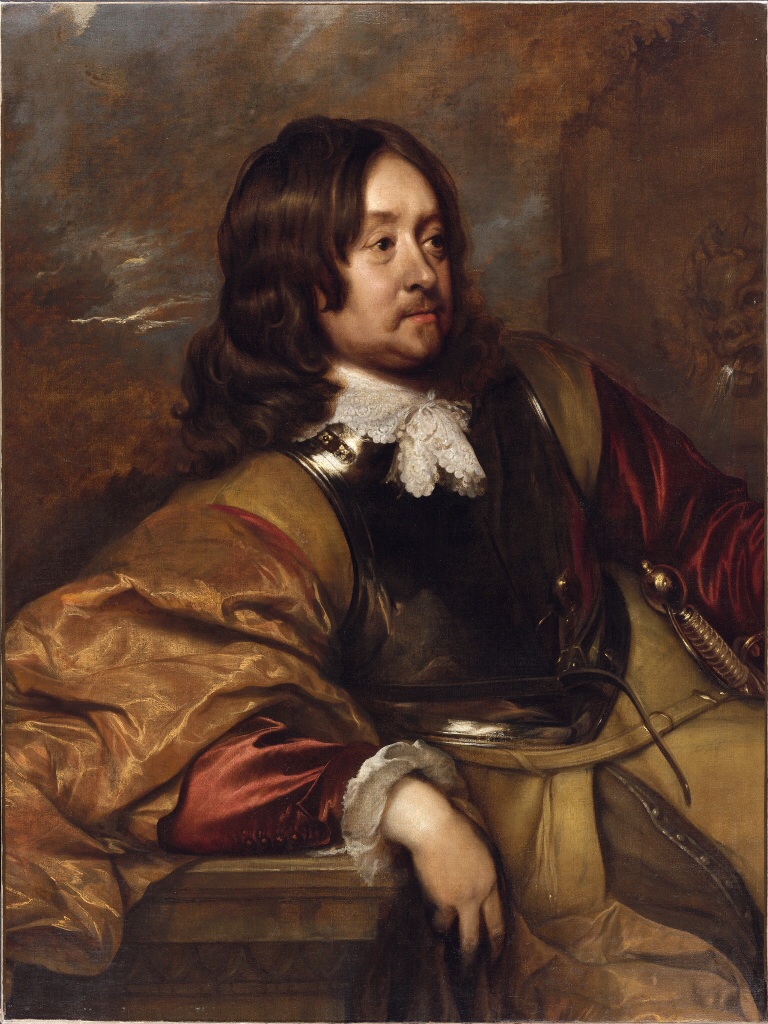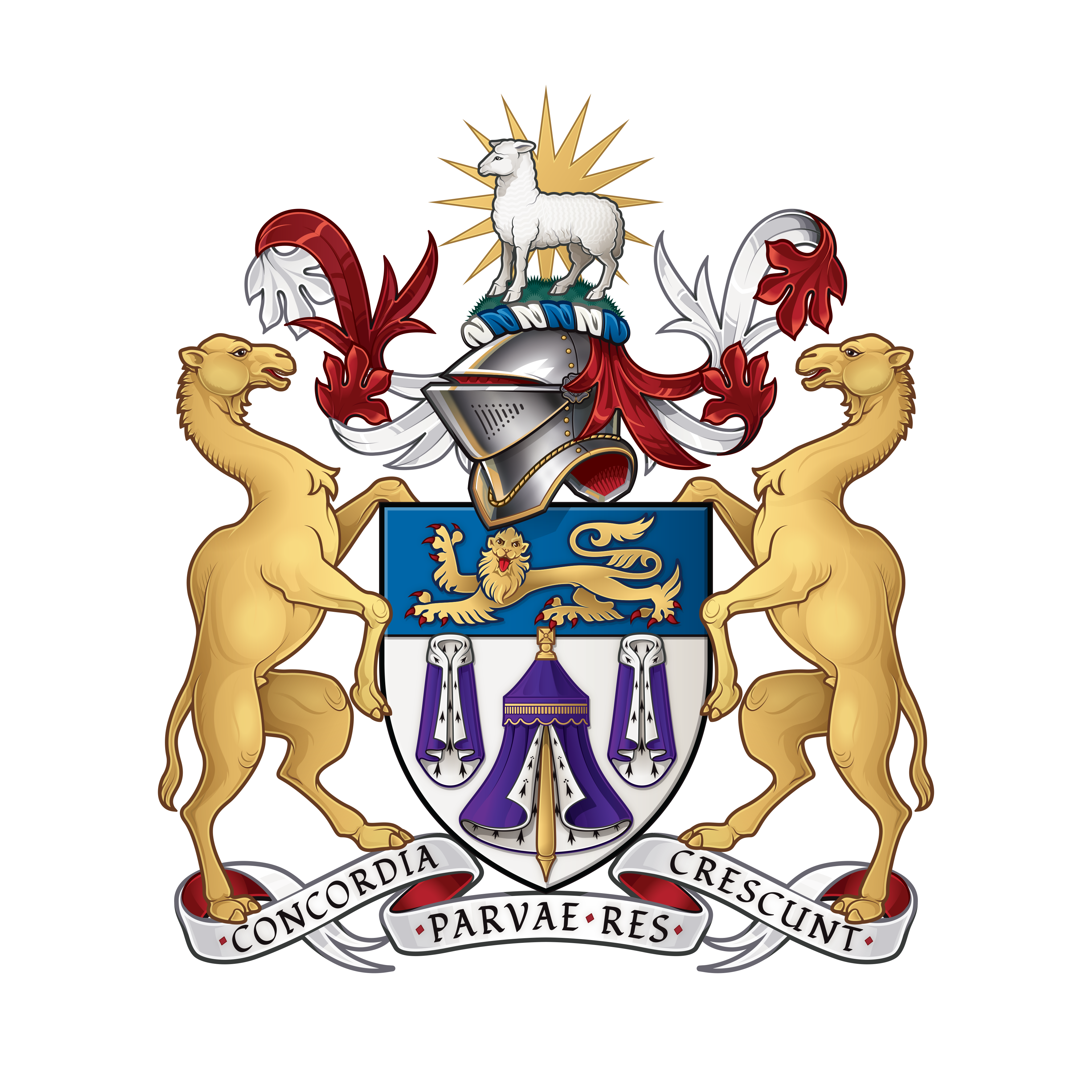|
Gerrard Winstanley
Gerrard Winstanley (baptised 19 October 1609 – 10 September 1676) was an English Protestant religious reformer, political philosopher, and activist during the period of the Commonwealth of England. Winstanley was the leader and one of the founders of the English group known as the True Levellers or Diggers. The group occupied formerly common land that had been privatised by enclosures and dug them over, pulling down hedges and filling in ditches, to plant crops. "True Levellers" was the name they used to describe themselves, whereas the term "Diggers" was coined by contemporaries. Early life Gerrard Winstanley was baptised on 19 October 1609, the son of Edward Winstanley, mercer, and was baptised in the parish of Wigan, then part of the West Derby hundred of Lancashire. His mother's identity remains unknown and he could have been born anywhere in the parish of Wigan. The parish of Wigan contained the townships of Abram, Aspull, Billinge-and-Winstanley, Dalton, Haigh, ... [...More Info...] [...Related Items...] OR: [Wikipedia] [Google] [Baidu] |
Wigan
Wigan ( ) is a town in Greater Manchester, England. The town is midway between the two cities of Manchester, to the south-east, and Liverpool, to the south-west. It is the largest settlement in the Metropolitan Borough of Wigan and is its administrative centre. The town has a population of 107,732 and the wider borough of 330,714. Wigan is part of the Historic counties of England, historic county of Lancashire. Wigan was in the territory of the Brigantes, an ancient List of ancient Celtic peoples and tribes, Celtic tribe that ruled much of what is now Northern England. The Brigantes were subjugated in the Roman conquest of Britain and the Roman settlement of was established where Wigan lies. Wigan was incorporated as a Borough status in the United Kingdom, borough in 1246, following the issue of a charter by Henry III of England, King Henry III of England. At the end of the Middle Ages, it was one of four boroughs in Lancashire established by royal charter. The Industrial Re ... [...More Info...] [...Related Items...] OR: [Wikipedia] [Google] [Baidu] |
Pemberton, Greater Manchester
Pemberton is an area of Wigan, in Greater Manchester, England. It lies on the southwestern bank of the River Douglas, Lancashire, River Douglas,. and east of the M6 motorway. The area is contiguous with Orrell, Greater Manchester, Orrell and as a ward has a population of 13,638,Pemberton 2001 United Kingdom Census, neighbourhood.statistics.gov.uk. URLs accessed 11 November 2008. increasing to 13,982 at the 2011 Census. Historic counties of England, Historically a part of Lancashire, Pemberton was formerly a Township (England), township and parish in the West Derby (hundred), hundred of West Derby. Following the Industrial Revolution, Pemberton became a densely populated industrial district comprising a variety of coal mi ... [...More Info...] [...Related Items...] OR: [Wikipedia] [Google] [Baidu] |
New Testament
The New Testament (NT) is the second division of the Christian biblical canon. It discusses the teachings and person of Jesus in Christianity, Jesus, as well as events relating to Christianity in the 1st century, first-century Christianity. The New Testament's background, the first division of the Christian Bible, is called the Old Testament, which is based primarily upon the Hebrew Bible; together they are regarded as Sacred Scripture by Christians. The New Testament is a collection of 27 Christianity, Christian texts written in Koine Greek by various authors, forming the second major division of the Christian Bible. It includes four Gospel, gospels, the Acts of the Apostles, epistles attributed to Paul the Apostle, Paul and other authors, and the Book of Revelation. The Development of the New Testament canon, New Testament canon developed gradually over the first few centuries of Christianity through a complex process of debate, rejection of Heresy, heretical texts, and ... [...More Info...] [...Related Items...] OR: [Wikipedia] [Google] [Baidu] |
Books Of Samuel
The Book of Samuel () is a book in the Hebrew Bible, found as two books (1–2 Samuel) in the Old Testament. The book is part of the Deuteronomistic history, a series of books (Book of Joshua, Joshua, Book of Judges, Judges, Samuel, and Books of Kings, Kings) that constitute a theological history of the Israelites and that aim to explain Torah, God's law for Israel under the guidance of the prophets. According to Jewish tradition, the book was written by Samuel, with additions by the prophets Gad (prophet), Gad and Nathan (prophet), Nathan, who together are three Biblical prophet, prophets who had appeared within 1 Chronicles in its account of David's reign. Modern scholarly thinking posits that the entire Deuteronomistic history was composed by combining a number of independent texts of various ages. The book begins with Samuel's birth and Yahweh's call to him as a boy. The story of the Ark of the Covenant follows. It tells of Israel's oppression by the Philistines, which brou ... [...More Info...] [...Related Items...] OR: [Wikipedia] [Google] [Baidu] |
Sacred History
Sacred history is the retelling of history narratives "with the aim of instilling religious faith" regardless of whether or not the narratives are founded on fact. In the context of the Hebrew texts that form the basis of Judaism, the term is used for all of the historical books of the Bible – i.e., Books of Kings, Ezra–Nehemiah and Books of Chronicles – spanning the period of the 10th to 5th centuries BC, and by extension also of the later books such as Maccabees and the books of the New Testament. The term in this sense is used by Thomas Ellwood in ''Sacred history, or, the historical part of the holy scriptures of the Old and New Testaments'', published 1709. Parts of the Torah, such as the story of Moses and Exodus, may have historical kernels, but they are highly embellished and difficult to reconstitute. Rabbi Neil Gillman, professor of Jewish philosophy at the Jewish Theological Seminary of America, states See also * The Bible and history * Exegesis * Historical t ... [...More Info...] [...Related Items...] OR: [Wikipedia] [Google] [Baidu] |
Bible
The Bible is a collection of religious texts that are central to Christianity and Judaism, and esteemed in other Abrahamic religions such as Islam. The Bible is an anthology (a compilation of texts of a variety of forms) originally written in Hebrew, Aramaic, and Koine Greek. The texts include instructions, stories, poetry, prophecies, and other genres. The collection of materials accepted as part of the Bible by a particular religious tradition or community is called a biblical canon. Believers generally consider it to be a product of divine inspiration, but the way they understand what that means and interpret the text varies. The religious texts were compiled by different religious communities into various official collections. The earliest contained the first five books of the Bible, called the Torah in Hebrew and the Pentateuch (meaning 'five books') in Greek. The second-oldest part was a collection of narrative histories and prophecies (the Nevi'im). The third co ... [...More Info...] [...Related Items...] OR: [Wikipedia] [Google] [Baidu] |
Book Of Acts
The Acts of the Apostles (, ''Práxeis Apostólōn''; ) is the fifth book of the New Testament; it tells of the founding of the Christian Church and the spread of The gospel, its message to the Roman Empire. Acts and the Gospel of Luke make up a two-part work, Luke–Acts, by the same anonymous author. Traditionally, the author is believed to be Luke the Evangelist, a doctor who travelled with Paul the Apostle. It is usually dated to around 80–90 AD, although some scholars suggest 110–120 AD.Tyson, Joseph B., (April 2011)"When and Why Was the Acts of the Apostles Written?" in: The Bible and Interpretation: "...A growing number of scholars prefer a late date for the composition of Acts, i.e., c. 110–120 CE. Three factors support such a date. First, Acts seems to be unknown before the last half of the second century. Second, compelling arguments can be made that the author of Acts was acquainted with some materials written by Josephus, who completed his Antiquities of the J ... [...More Info...] [...Related Items...] OR: [Wikipedia] [Google] [Baidu] |
Pamphlet
A pamphlet is an unbound book (that is, without a Hardcover, hard cover or Bookbinding, binding). Pamphlets may consist of a single sheet of paper that is printed on both sides and folded in half, in thirds, or in fourths, called a ''leaflet'' or it may consist of a few pages that are folded in half and Saddle stitch stapler, saddle stapled at the crease to make a simple book. In the "International Standardization of Statistics Relating to Book Production and Periodicals", UNESCO defines a pamphlet as "a non-periodical printed publication of 5 to 48 pages, excluding covers, published in a specific country and available to the public," while a book is "a non-periodical printed publication of at least 49 pages, excluding covers." These definitions are intended solely for UNESCO's book production statistics. Etymology The word ''pamphlet'' for a small work (''opuscule'') issued by itself without covers came into Middle English as or , generalized from a twelfth-century Elegiac c ... [...More Info...] [...Related Items...] OR: [Wikipedia] [Google] [Baidu] |
Cobham, Surrey
Cobham () is a large village in the Borough of Elmbridge in Surrey, England, centred south-west of London and northeast of Guildford on the River Mole, Surrey, River Mole. It has a commercial/services High Street, a significant number of primary and private schools and the Painshill Park, Painshill landscape park. Toponymy Cobham appears in Domesday Book of 1086 as ''Covenham'' and in 13th century copies of earlier charters as ''Coveham''. It is recorded as ''Cobbeham'' and ''Cobeham'' in the 15th century and the first use of the modern spelling "Cobham" is from 1570. The name is thought to derive from an Anglo-Saxon landowner either as ''Cofa's hām'' or ''Cofa's hamm''. The second part of the name may have originated from the Old English ''hām'' meaning a settlement or enclosure, or from ''hamm'' meaning land close to water. The area of the village known as Cobham Tilt, is first recorded as ''la Tilthe'' in 1328. The name is thought to derive from the Old English ''Tilth ... [...More Info...] [...Related Items...] OR: [Wikipedia] [Google] [Baidu] |
First English Civil War
The First English Civil War took place in England and Wales from 1642 to 1646, and forms part of the 1639 to 1653 Wars of the Three Kingdoms. An estimated 15% to 20% of adult males in England and Wales served in the military at some point between 1639 and 1653, while around 4% of the total population died from war-related causes. These figures illustrate the widespread impact of the conflict on society, and the bitterness it engendered as a result. Conflict over the role of Parliament and religious practice dated from the accession of James VI and I in 1603. These tensions culminated in the imposition of Personal Rule in 1629 by his son, Charles I, who recalled Parliament in April and November 1640. He hoped by doing so to obtain funding that would enable him to reverse his defeat by Scots Covenanters in the Bishops' Wars, but in return Parliament demanded a greater share in government than he was willing to concede. In its early stages, the vast majority on both sides s ... [...More Info...] [...Related Items...] OR: [Wikipedia] [Google] [Baidu] |
Guild
A guild ( ) is an association of artisans and merchants who oversee the practice of their craft/trade in a particular territory. The earliest types of guild formed as organizations of tradespeople belonging to a professional association. They sometimes depended on grants of letters patent from a monarch or other ruler to enforce the flow of trade to their self-employed members, and to retain ownership of tools and the supply of materials, but most were regulated by the local government. Guild members found guilty of cheating the public would be fined or banned from the guild. A lasting legacy of traditional guilds are the guildhalls constructed and used as guild meeting-places. Typically the key "privilege" was that only guild members were allowed to sell their goods or practice their skill within the city. There might be controls on minimum or maximum prices, hours of trading, numbers of apprentices, and many other things. Critics argued that these rules reduced Free market, fre ... [...More Info...] [...Related Items...] OR: [Wikipedia] [Google] [Baidu] |
Worshipful Company Of Merchant Taylors
The Worshipful Company of Merchant Taylors is one of the 111 Livery company, livery companies of the City of London. The Company, originally known as the ''Guild and Fraternity of St John the Baptist in the City of London'', was founded prior to 1300, first incorporated under a royal charter in 1327, confirmed by later charters in 1408, 1503 and 1719. Its seat is the Merchant Taylors' Hall, London, Merchant Taylors' Hall between Threadneedle Street and Cornhill, London, Cornhill, a site it has occupied since at least 1347. The Company's motto is ''Concordia Parvae Res Crescunt'', from the Ancient Rome, Roman historian Sallust meaning ''In Harmony Small Things Grow''. History The Company was at first an association of tailors. By the end of the 17th century, its connection with the tailoring trade had virtually ceased and it became what it is today, a philanthropic and social association – albeit that it has recently rekindled its links with Savile Row tailoring, Savile Row a ... [...More Info...] [...Related Items...] OR: [Wikipedia] [Google] [Baidu] |









